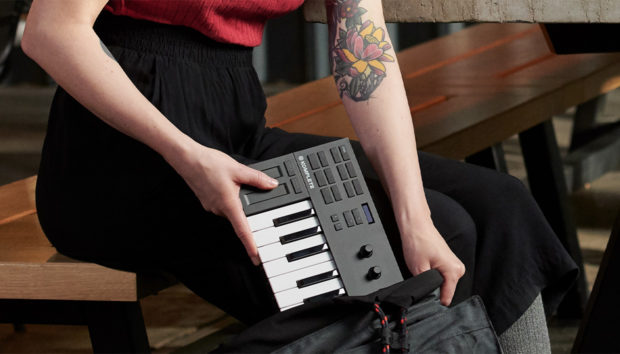
Uprising YouTuber Sanjay C is an Indian born, Washington D.C.-based classical pianist, songwriter, and producer. Incorporating his profound music and production skills into his video tutorials and reviews, he’s the perfect candidate to guide you through your first steps of MASCHINE MIKRO beat-making.
You’ll find lots more useful music production tips on Sanjay’s YouTube channel here.
In this four-part video tutorial, Sanjay C walks us through all the important aspects of using the MASCHINE MIKRO as a beginner. From plugging in the cables, setting up and configuring the software, to little workouts with the touch-sensitive pads, up to laying down harmonies and song arrangements.
These short and on-point tutorials make it possible to familiarize yourself with MASCHINE MIKRO just within minutes and start the music production journey without researching the aspects and pitfalls of beat making first.
Setting up the MIKRO and making the first beat
Before getting into the musical aspect, it’s mandatory to install the software, set up the gear, and plug in all the necessary cables. Having done that, Sanjay shows how to do your audio configurations and tries out a quick first jam on the pads. This is followed by recording basic rhythmic patterns, adjusting tempo, and editing out mistakes by using MASCHINE’s software application.
Groups, chords, scales, and step-sequencing
Adding to the existing basic beat, he goes on and opens a new group to lay down extra chords on top as a harmonic foundation. A feature that comes in handy at this point is the the chord and scale function, allowing you to press chords with just one finger and play a bassline in the correct scale. Additionally, you can create some rhythmical extras using sequencer mode.
Creating melodies, effects, and arranging
Having covered all the main aspects for basic beat programming Sanjay goes on and adds a catchy four-bar melody to the beat once more using the scale mode to stay in key with the rest of the harmonies. After adding and adjusting extra effects and their intensity the beat is ready for an arrangement. The arrangement is done using the scenes view on MASCHINE MIKRO.
Depending on your further plans you can now bounce the arrangement to an audio file or export the stems to another DAW and apply further adjustments.
Slicing samples and making lo-fi beats
The fourth part of this video tutorial series is dedicated to slicing samples and creating lo-fi hip hop beats. After slicing up the sample and assigning them to their individual pads, Sanjay also routes them into a choke group, making sure the sounds don’t overlap when pressing multiple pads at once.
After punching in the beats and harmonies he adds lo-fi effect colouring by using external effect plugins controlled via MASCHINE’s knob and button surface.















